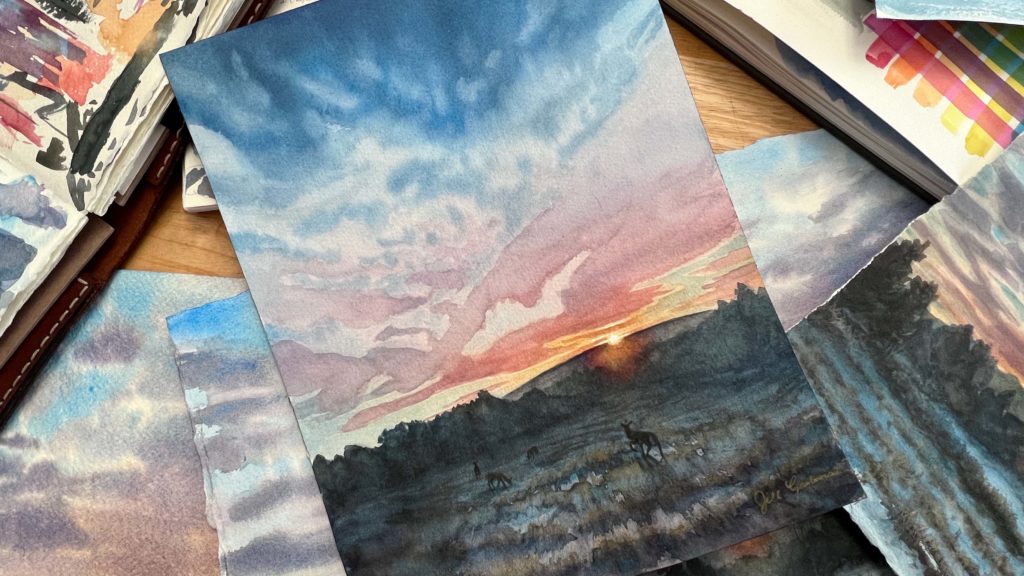
Do you ever repeat paintings of the same thing? Maybe you just enjoy the subject and want to continue the theme. Perhaps you the first time didn’t come out quite right and you want a second chance.
If you’re using watercolor, getting the right look is especially tricky as, unlike other mediums where you can wipe out or layer over, you often have one shot with each painting. If it doesn’t come out right, you usually need to try again.
Now, you say you’ve repeated something before, but have you ever painted something 5 times within a continuous set of days? Let’s talk about what happens when you choose to stay with something and let it lead the conversation.
On my Instagram I recently posted a story saying I was “haunted” by this composition.
However “haunted” probably isn’t the right word. Let me change that now to “captivated”.
The difference is in the mindset and boundaries you set up.

The Inspiration:
But let me back up. A few things converged to create this perfect storm of healthy artistic obsession.
First, I watched a wonderful demo from Andy Evansen on painting snow scapes. I’d painted a few before but it’s not my specialty so I found this inspiring.
Adding to this, my local art guild has an upcoming show with a winter theme. Now, I didn’t at the time have anything to submit, but didn’t I just get a wave of inspiration to paint some snow?
Yes.
I combed my photos of winter anything. After creating a short list of favorites, I picked out a few that best straddled the line between approachable and interesting. I was looking for something challenging I could learn with, but complete in time for the submission date.
Voila, the chosen reference photo.
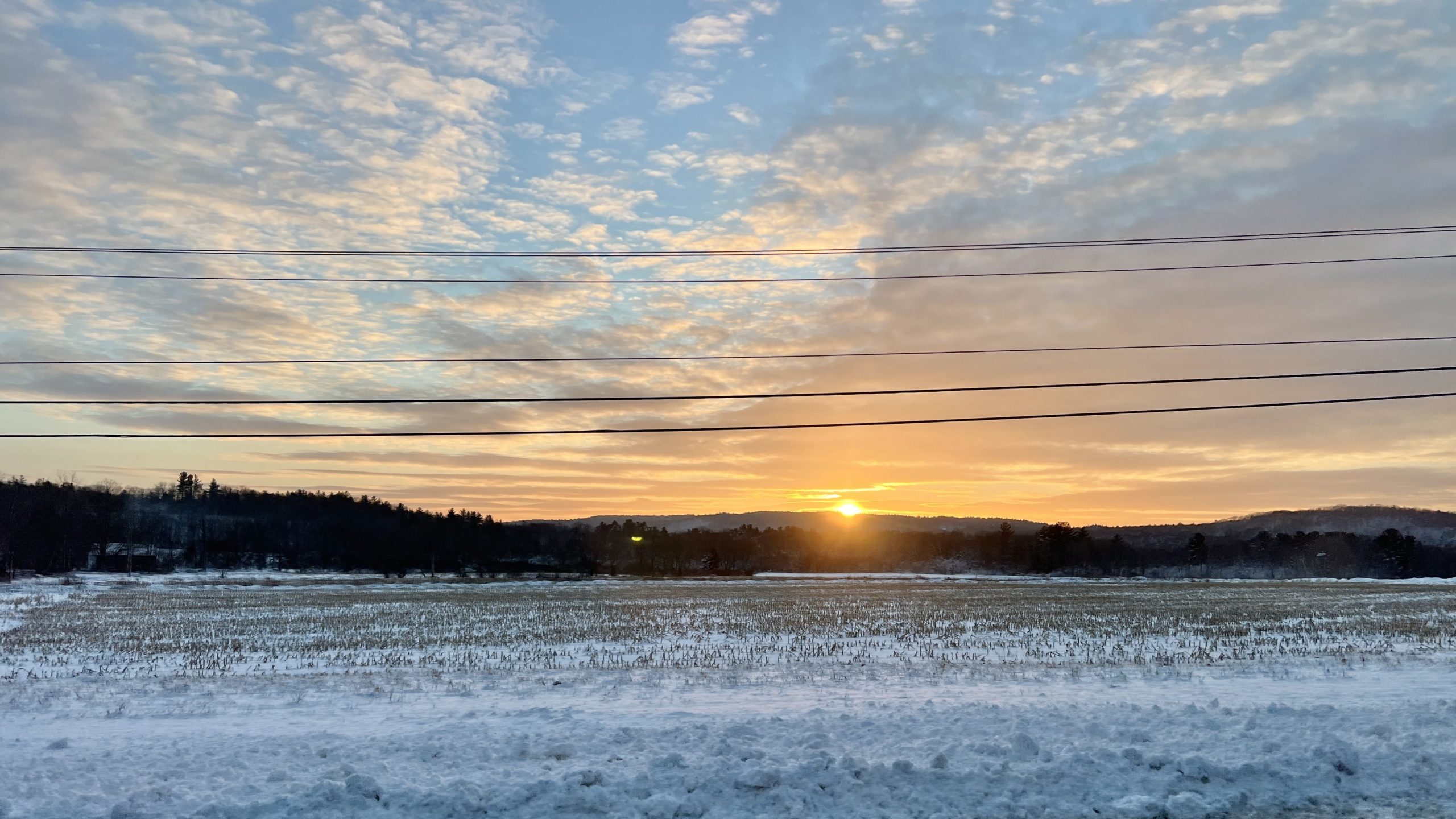
5 Repeated Paintings + Sketchbook Work
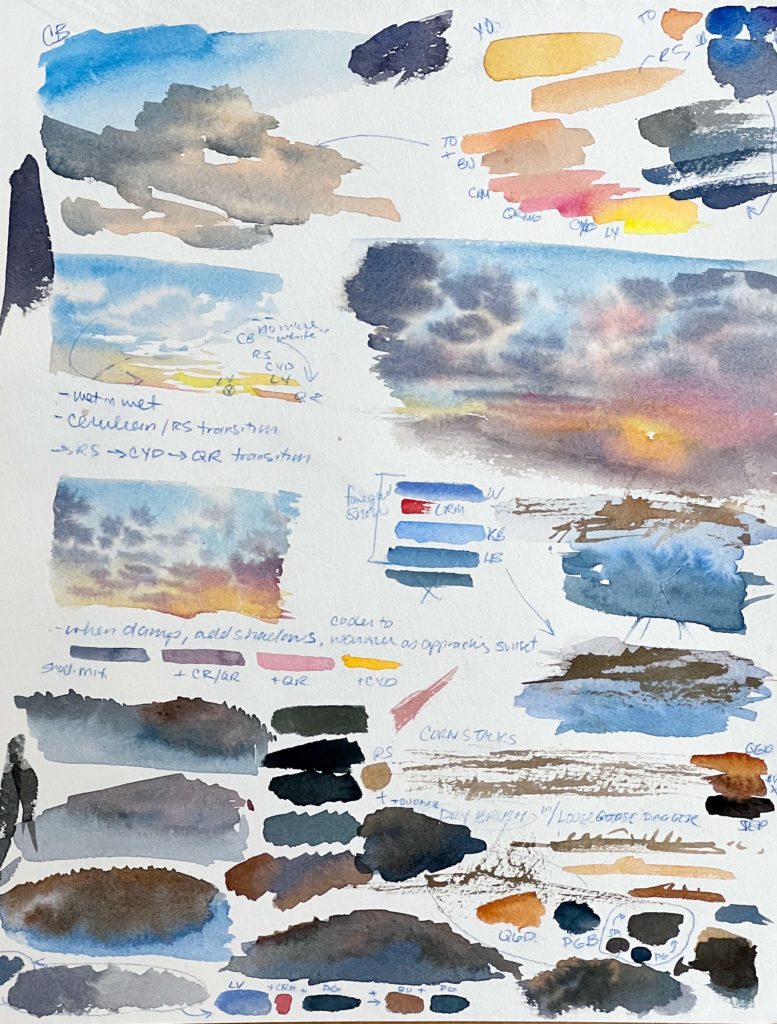
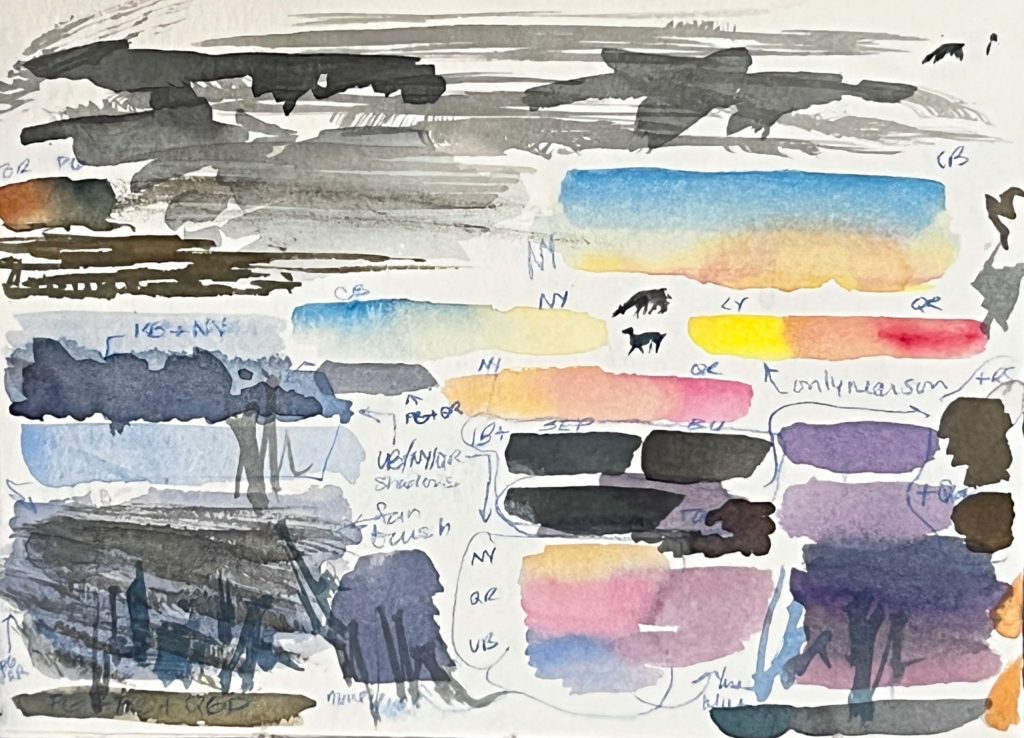
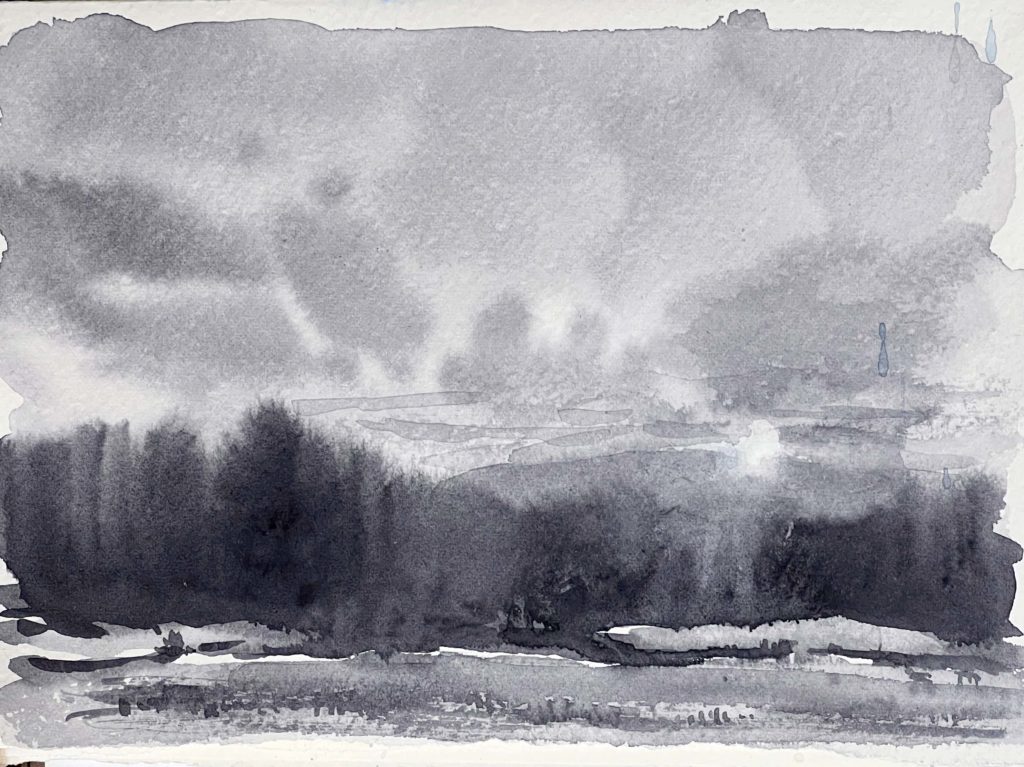
Prepwork
Now time to apply new knowledge to a new composition, I jumped into sketchbook work first.
- I did some quick studies to figure out/remind myself how to paint skies like this.
- Then swatched some colors to list which paints I’d use.
- Next a value sketch.
I thought I was SO ready. Haha.
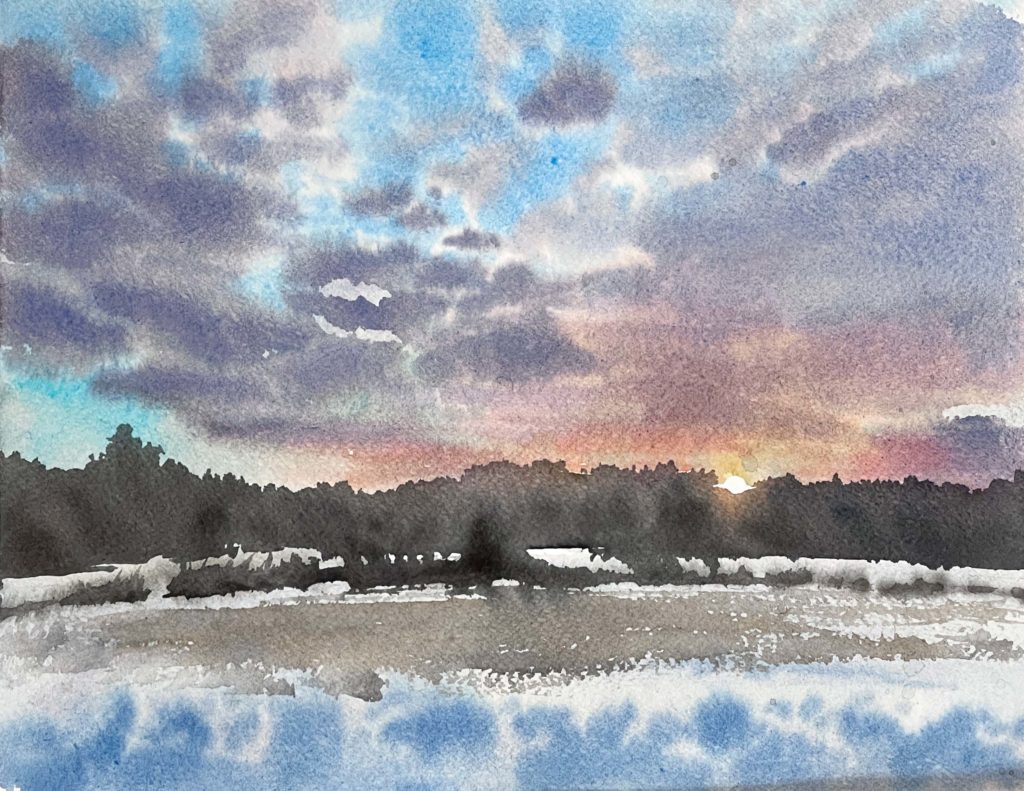
#1
I forgot what I was doing and messed up which side of the clouds is supposed to be lit. Try Again.

#2
Better, a little heavy though. Let’s adjust some of the values there.

#3
Hmmm, value is better, but colors are a little muddy and now saw something that made me decide that the composition is MUCH stronger as a portrait. I’ll take a break, see if I’m missing something.
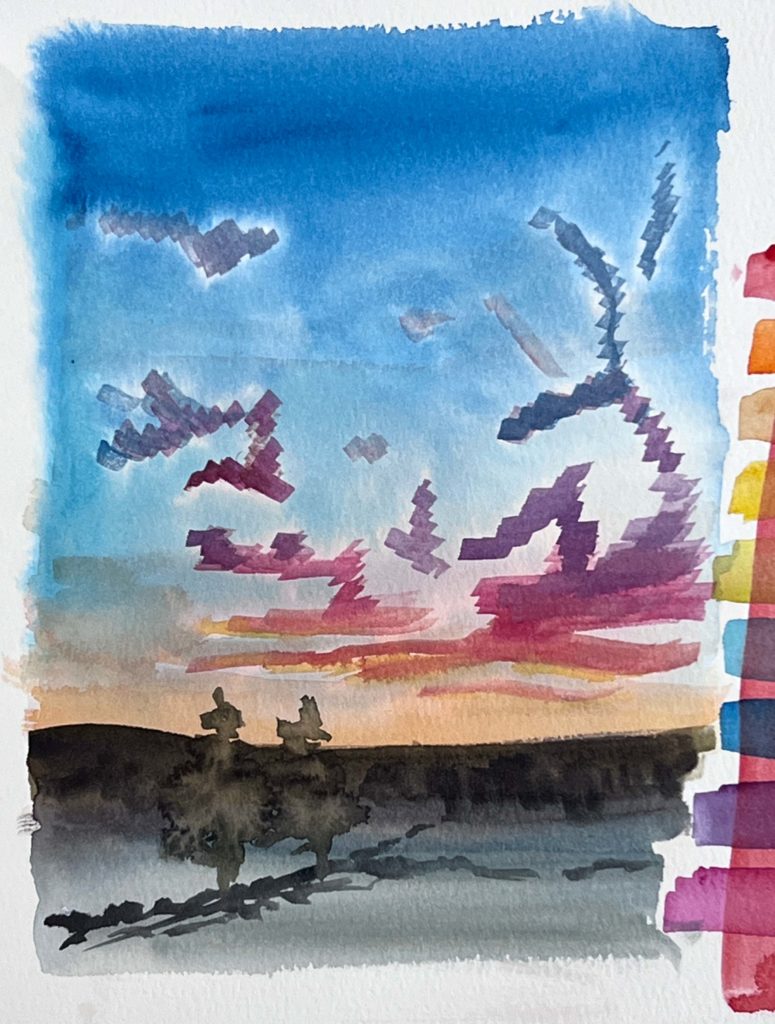
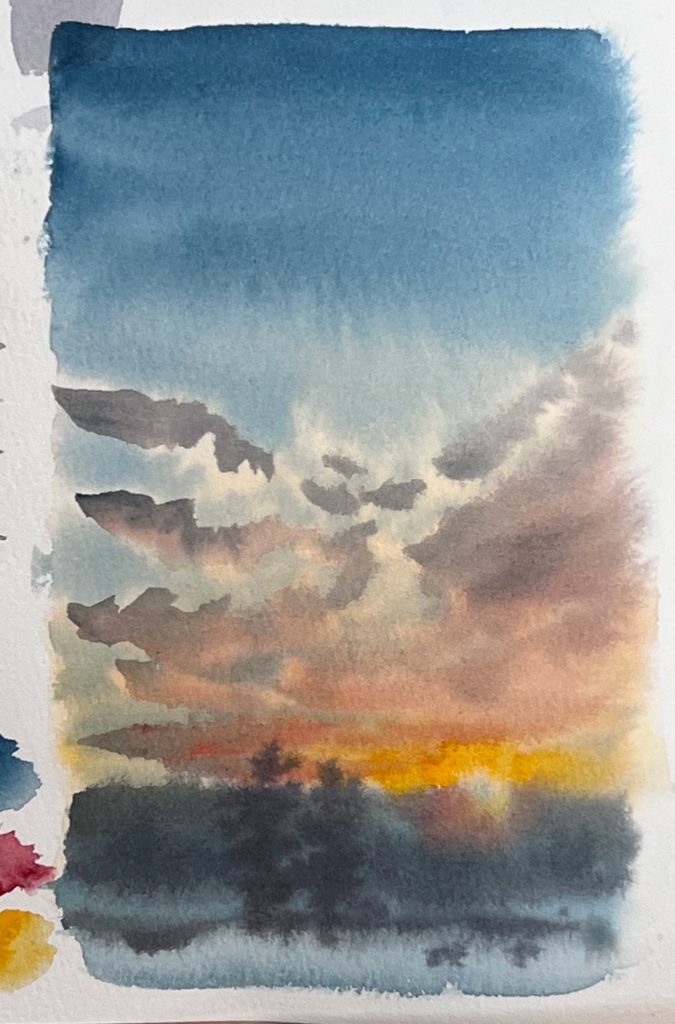
Take a break and try something different.
OooOOOooo, interesting. I don’t think I’ll do this, but what if…?
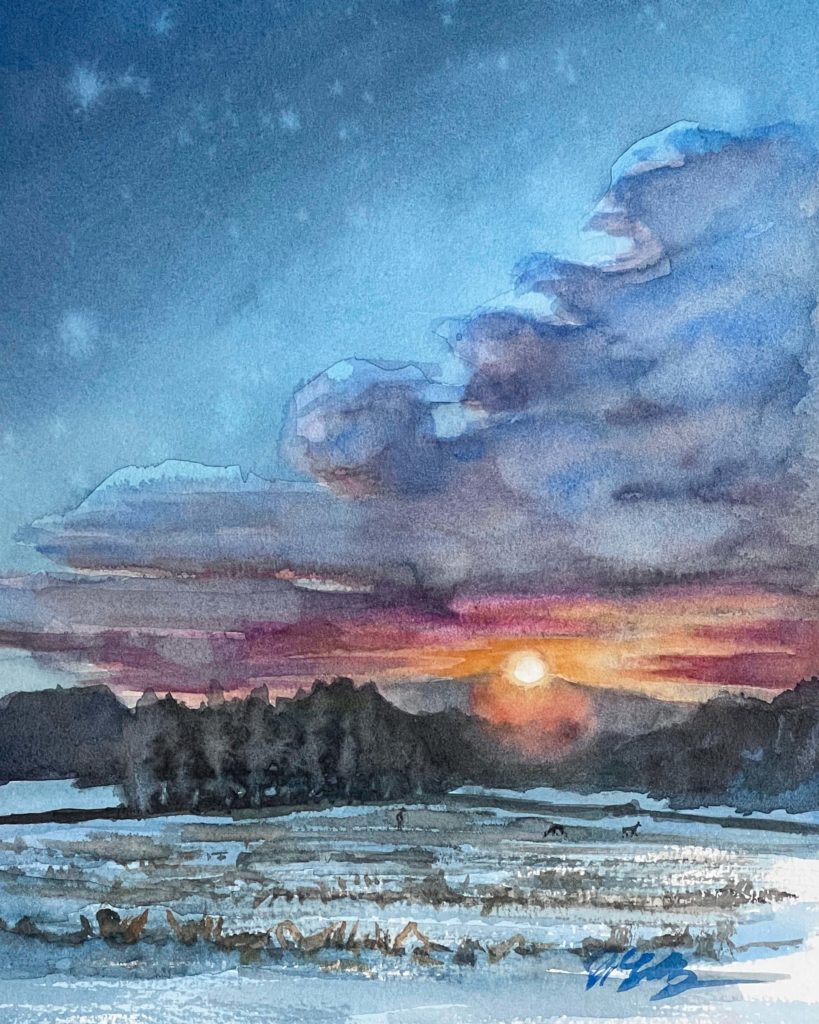
#4
Oh, we’ve picked up a fresh track now. This one was actually most inspiring one wash in, but I still love the loose, washy nature of the final version. So, what if I hadn’t tightened up at the end?

#5
Magic. Less paint but more emotion. Exactly what I knew I wanted, but didn’t know what it looked like, or how to get it!
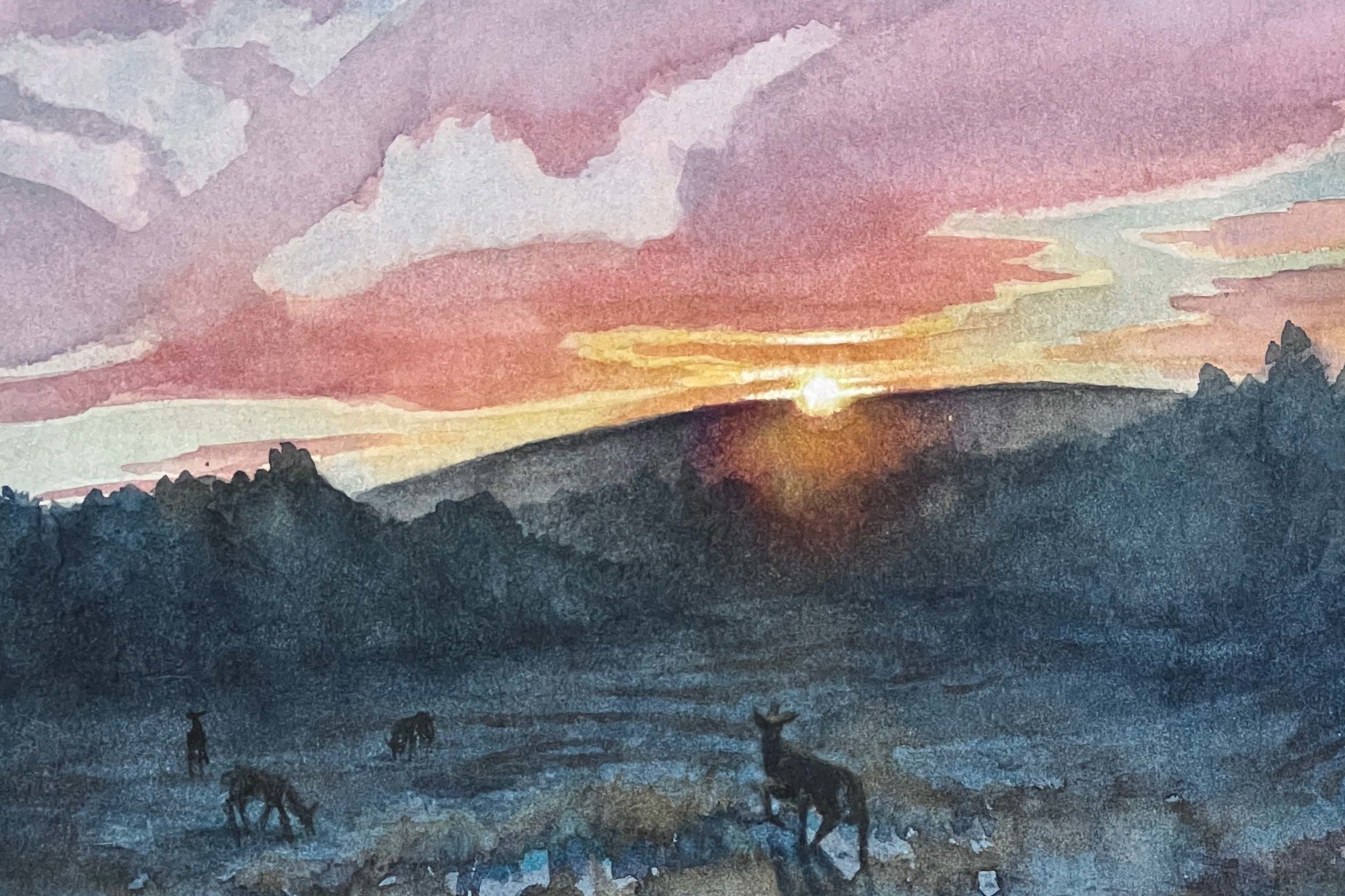
Letting Repetition Transform Your Painting
What happened over 5 paintings and 7 pages of sketchbook paper is I stopped painting the photo and I started painting the inspiration. I let the idea tell me, what it needed and what it didn’t need.
You may be nodding along since the concept sounds like something artists do ideally. Underneath that renewed creative surge though, the part of your brain that physically does the painting has some serious questions…
“I’m glad we’re excited, yay team. But what does that even mean? How do I paint inspiration?!”
I still ask myself those two questions. Every painting, one part of my brain bickering with the other like the vultures from Disney’s The Jungle Book. “What do you want to do?” countered with “I don’t know, what to you want to do?…” If I’m letting the painting make all the decisions, shouldn’t this be easier?
“Painting the inspiration” means you need to learn how to interpret what you see to convey the spirit of your inspiration.
Now since I love metaphor and analogies think of it like this:
If you translate something with nuance word for word there can be some loss of expression. For example, you may lose the impact of idioms if your language doesn’t have an equivalent. Think of a non-english speaker seeing “cut a rug” and after translating it word by word, asking “Why would I “slice a carpet”?…” Not the same. What could have been a very interesting bit of writing is sounding a little flat.
To counter some of this, translators and interpreters often take some creative liberties to change the exact words to get the correct meaning. The best example of this is in the literary world where sometimes there is a “preferred translation” that shows the work in its best spirit outside of its native language.
Art is the same. You need to translate and interpret the reference to get the spirit of the inspiration. Finding a different set of words is all good, but how do you do that with paint?
Transcribing a reference is easy (or easier) mentally, you just have to know technique to get the same image. This is why many beginning artists focus on copying master studies, to learn technique. When you translate an original reference successfully, you not only need to know various technical applications, but you also have to look inside to see what you want to show, and how. To create more challenge your success is supported or sabotaged by habits and ego as well, often unconsciously.
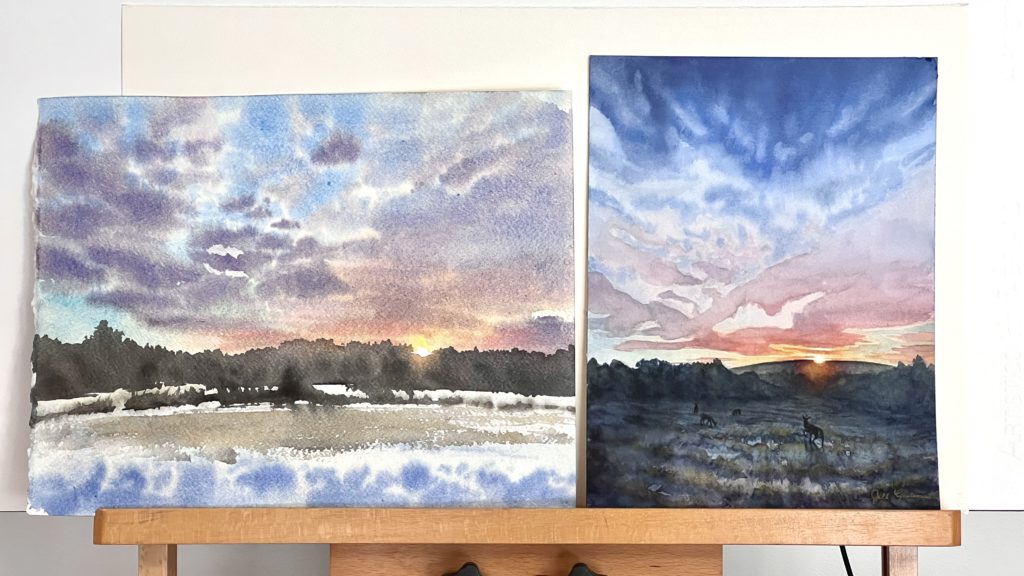
Navigating Repetition: The Road from Painting 1 to 5
Don’t let the more challenging journey scare you. It sounds hard. But remember small steps produce bigs results over time. If you look at painting 1 and painting 5, there’s some big differences, technically and stylistically. But I didn’t start each version with a looming dread of how far I needed to change. I had NO idea painting 5 would look like this or that it would come to exist at all. Each version held clues to where I needed to go next. Then after that, another clue. Hold your inspiration as a guide, but stay in the present.
What can clues and revelations look like?
Visual Journey:
I let go of elements/styles that were not actively improving the scene. How do you really know if it’ll be better? You do a version that changes it.
What I was holding on to:
- My landscape-oriented drawing matched the reference photo perfectly and the sunset followed the rule of thirds.
- I knew I could make the line of trees the right amount of loose and look “good”.
- I finally got a handle on getting the light “correct” in the clouds. Sunsets are bottom lit. Check.
But remember don’t let habit or ego lead the story. Challenge everything.
What I challenged:
- Orientation: I did a version cropped way tighter in portrait orientation. Just because the reference is landscape, ask if it’s more interesting not landscape.
- Elements: I softened the far tree line and omitted the front line of trees entirely bringing more focus to the sunset. My “good” trees can find their own painting later.
- Style: I flattened the color in the clouds. I know I improved my cloud lighting knowledge, but since realistic wasn’t as always as evocative here, less rendering made a stronger visual impact. Once again, I can show off my improved cloud skills some other time.
Internal Journey:
Harder to see. Besides telling my artistic ego to stuff its really cool trees and clouds in the toolbox for another painting, basically I made changes with each attempt that were more and more “risky”. I created imagery that’s farther and farther away from the reference photo. This takes a little bit of courage and a willingness to spend time, materials, and money on learning.
That can be hard.
But, funny enough, by moving farther from the photo, I got closer and closer to my inspiration. The cost of discovering how to express the right connection here was a few attempts and a handful of paper.
To counter any internal pushback on doing more copies, I try to remind myself that I don’t want to excel at being an artist that used their supplies the most economically (there are plenty of those), I want to be known for my unique growth and creativity.
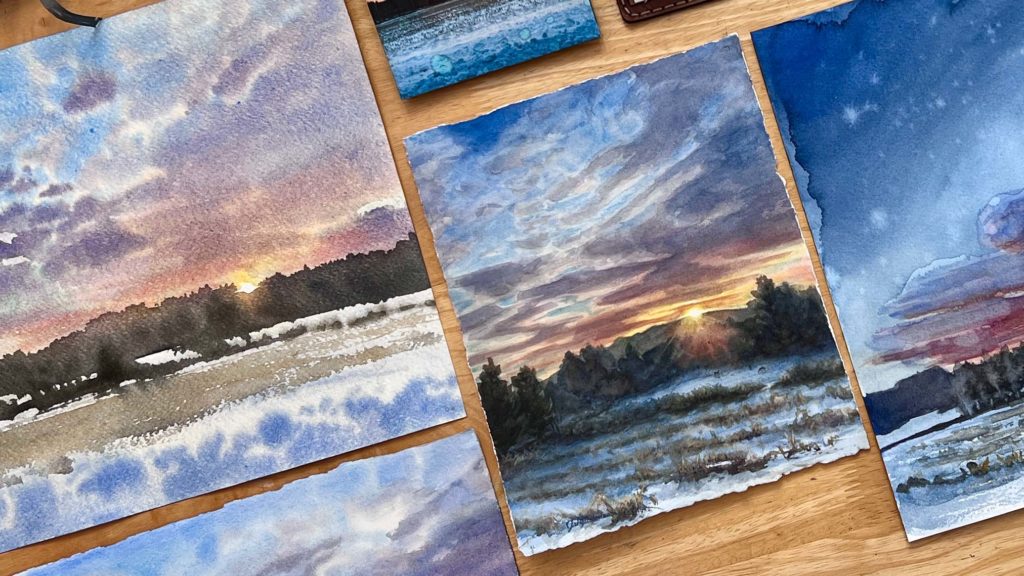
How Repetition Can Work for Your Painting Practice
Enough about why you should, how can YOU apply repetition? Well, it’s not a manual, but I recommend keeping boundaries and direction in mind when you start to repeat paintings. Ironically, having some structure is helpful for creativity. The key to creating that structure is knowing why you want to repeat paintings.
First paint the thing. However your intuition tells you. This is your starting point. Now ask yourself a question. What needs improvement? (This could be multiple things, take your time, and try and problem solve ONE at a time when you’re beginning. As you progress, you can start changing a few things at once.)
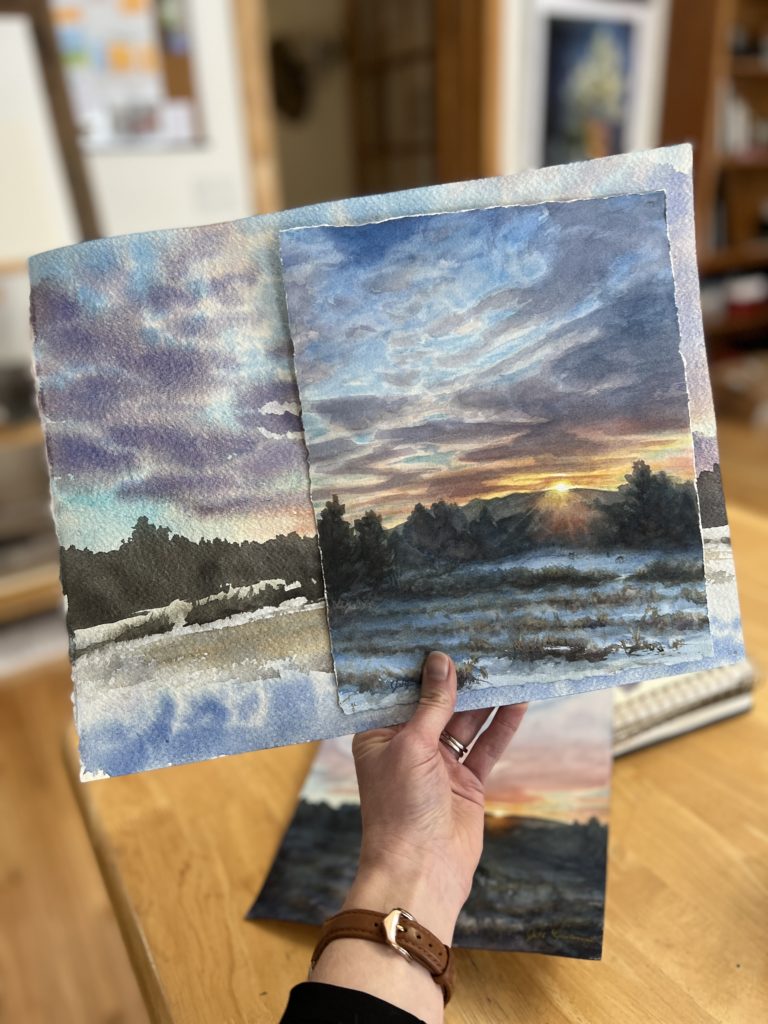
Improving Composition
Your goal is to change the composition with every try. Small changes like omitting subjects, simplifying areas, or big changes like changing a landscape into a portrait. Move stuff, delete stuff, add stuff! Shake the snow globe and see where things fall best.

Improving Color
This may be a matter of technique (blending/keeping colors separate when needed) or it could be your color choice that’s not in harmony with the idea. If it’s the colors themselves, try a limited palette or a stylized color scheme. There may just be too many competing colors. When repeating, with every attempt change your colors a little or a lot. Try a trio of clean primaries, 4 muted tones, 2 contrasting colors, etc. Push the boundaries for your personal color comfort zone and your attachment to the colors in your photo (or real life!).
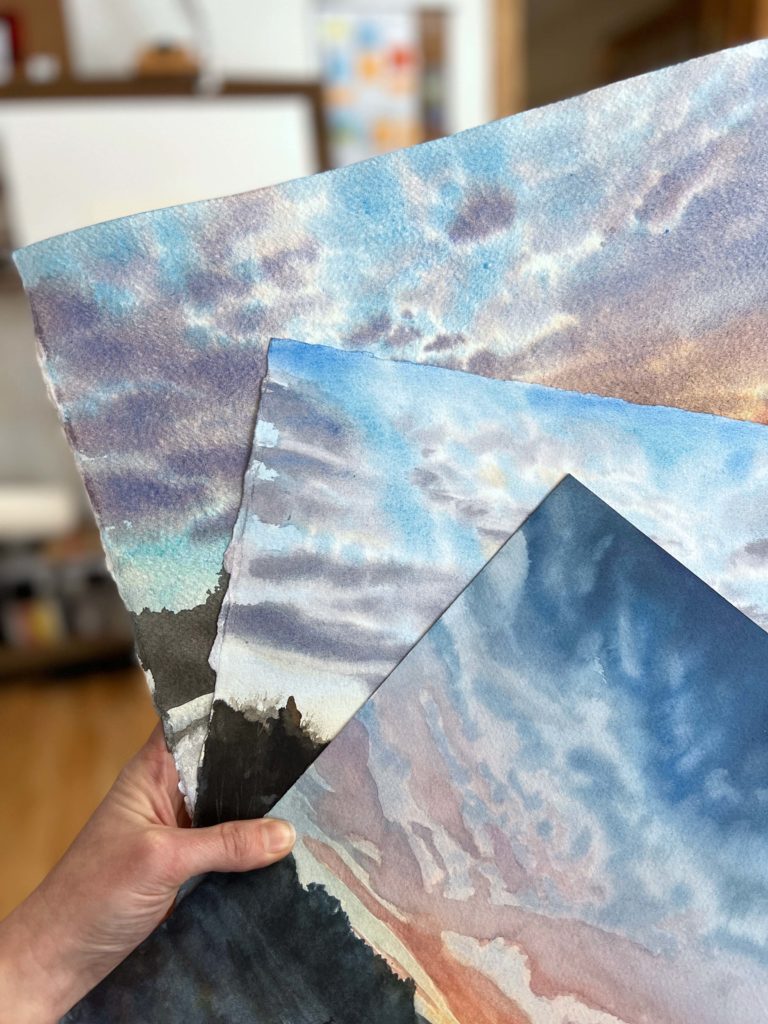
Improving Technique
Repeating to improve technique may be a matter of keeping the painting the same for now, to isolate your variable of changing how you apply the paint. I always encourage exploring techniques in a sketchbook before looking up help, but there comes a time where you need help if you get stuck.
Do yourself a favor and don’t search for “How to paint a sky”. Focus on searching for the technique like, “how to paint a smooth gradient wash in watercolor”, or “tips for dropping in watercolor clouds wet in wet”. Also watch more than one artist’s version of a technique. Not only are there always different ways to do things, but you will also be more likely to get the technical advice you need without just accidentally learning how to copy another artist’s style.
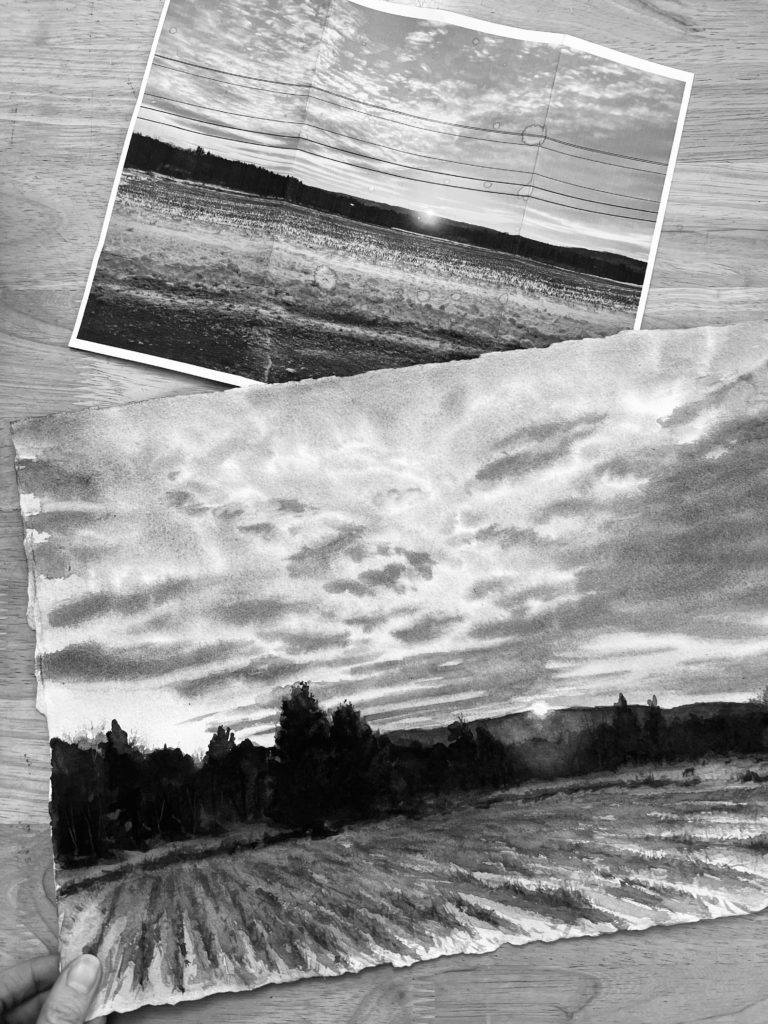
Improving Value
Many of the above repetitions may automatically sort this out. But start with analyzing a black and white photo of the scene and your painting. Is there already a clear value pattern (light-dark-light-dark) and you’re just not hitting it? Or does the reference need some help strengthening the value as well? Not every scene has a winning value pattern to start. You can try exaggerating the lightness or darks of areas to increase the contrast, combine or simply areas to clarify your value patterns, or introduce entirely new elements to introduce a much need source of light and dark somewhere.

One last piece of advice.
Be captivated. Be excited. Just don’t chase the shiny idea off a cliff, sprinting past warning signs that have valuable directions. Use a method in the madness. Yes, you can repeat paintings of the same thing as many times as you want to. However, they will not help you improve if you’re not paying attention and just going through the motions.
- Listen to each painting.
- Take breaks.
- Sleep on it (figuratively, for those trying to translate that idiom 😉).
- Don’t think about it at all for a while.
- Try something else.
- Don’t dismiss “bad ideas”.
- Purposely do something that you “know you won’t like” (<—Sometimes there’s special magic here).
- Loosen your grip on what it “should” be.
The key here is letting the process be present, not obsessive.
Let it take time. Don’t immediately rush into another version, when you should be going to bed. I know it can be exciting (or frustrating and you want to “fix it” NOW), but hasty attempts often don’t work out. It won’t be the idea’s fault, you were just tired/frustrated/etc, but you might interpret a failed painting as a failed idea. What a loss would that be to write off a great idea just because of a bad attempt? So write down the idea for that new version and let it simmer until next session. No one likes to be smothered.
Wow, it sounds a lot like I’m giving out relationship advice, right? 🤔
So here’s to the next time you repeat paintings to court some creative magic!!
Drop me a email, DM, or comment on a recent post with your next magical moment! I’d love to celebrate with you. 🎉
-Jill